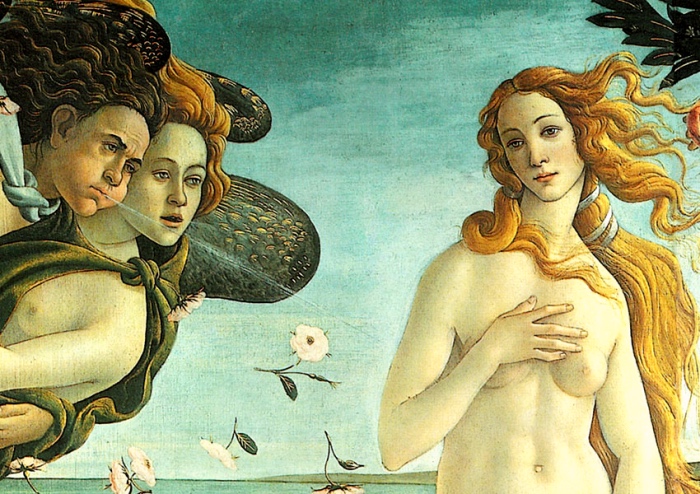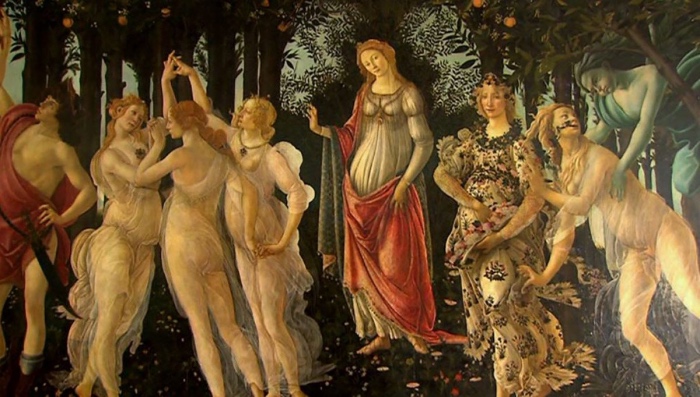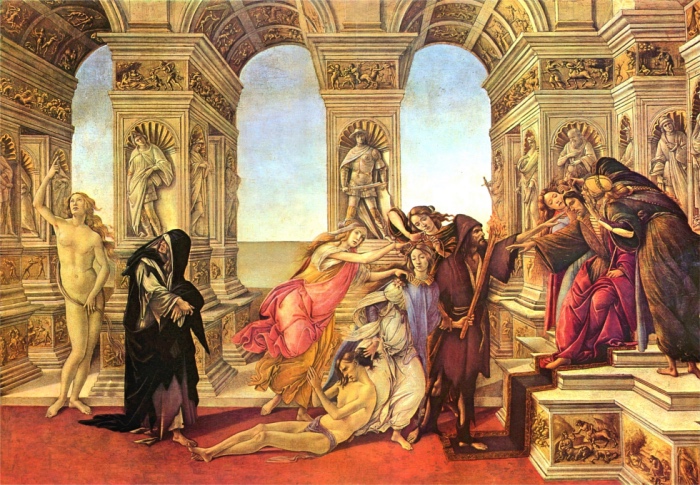
Have you ever wondered why Sandro Botticelli remains a legendary figure in the universe of Renaissance art? Born in 1445Florence, Botticelli is not only famous for the beauty of his works depicting goddesses and Madonnas, but also for the vast contribution he made to the Renaissance.
Sandro Botticelli

La Primavera
Botticelli lived and worked mainly in the service of the Medici family, Florence. The historical period in which Sandro Botticelli produced his works was exciting. The city of Florence was a point of reference for intellectuals and artists, thanks to the patronage of important historical figures such as Lorenzo de’ Medici.
The end of the Medici seigniory, however, marked a period of crisis for Botticelli, which led him to drastically alter his artistic visions and completely change his style and subjects.
BOTTICELLI’S EARLY YEARS AND ARTISTIC TRAINING
Sandro Botticelli began his artistic training under Filippo Lippi, author of the Madonna and Child with Two Angels, and later joined the work group at Verrocchio’s workshop.
Botticelli opened his workshop in 1470, starting a career that would profoundly influence art.
SANDRO BOTTICELLI’S MOST FAMOUS WORKS
Sandro Botticelli, initially influenced by his masters, developed a recognisable style that manifested itself in works such as the ‘Madonna della Loggia’.
The grace of his painting technique, his profound culture and attention to detail have made his works among the most important in the history of art. These include his most famous works: The Birth of Venus and Spring.
Botticelli’s Primavera, commissioned by Lorenzo di Pierfrancesco de’ Medici, is rich in symbolism and classical allusions. The Birth of Venus, on the other hand, represents earthly love and purity of soul.
Both works, housed and exhibited at the Uffizi in Florence, reflect the Neo-Platonic ideals that permeated Florentine culture of the time.
BOTTICELLI’S LAST YEARS
The political crisis that gripped Florence at the end of the 15th century profoundly influenced Sandro Botticelli, who entered a phase of his life characterised by a profound religious crisis and growing mysticism.
This particular moment in Botticelli’s life is evident in his later works, such as ‘The Calumny of Apelles‘ and ‘The Mystical Nativity’.

La Calunnia di Apelle
Sandro Botticelli is the artist who more than others embodies the Renaissance in all its aspects: artistic, cultural and philosophical. The entire corpus of his works, so diverse and rich in symbols and meanings, continues to inspire and fascinate.
From the beauty of his mythological figures to the depth of his religious subjects, Botticelli left an indelible mark on world art, making him a true Renaissance genius.

